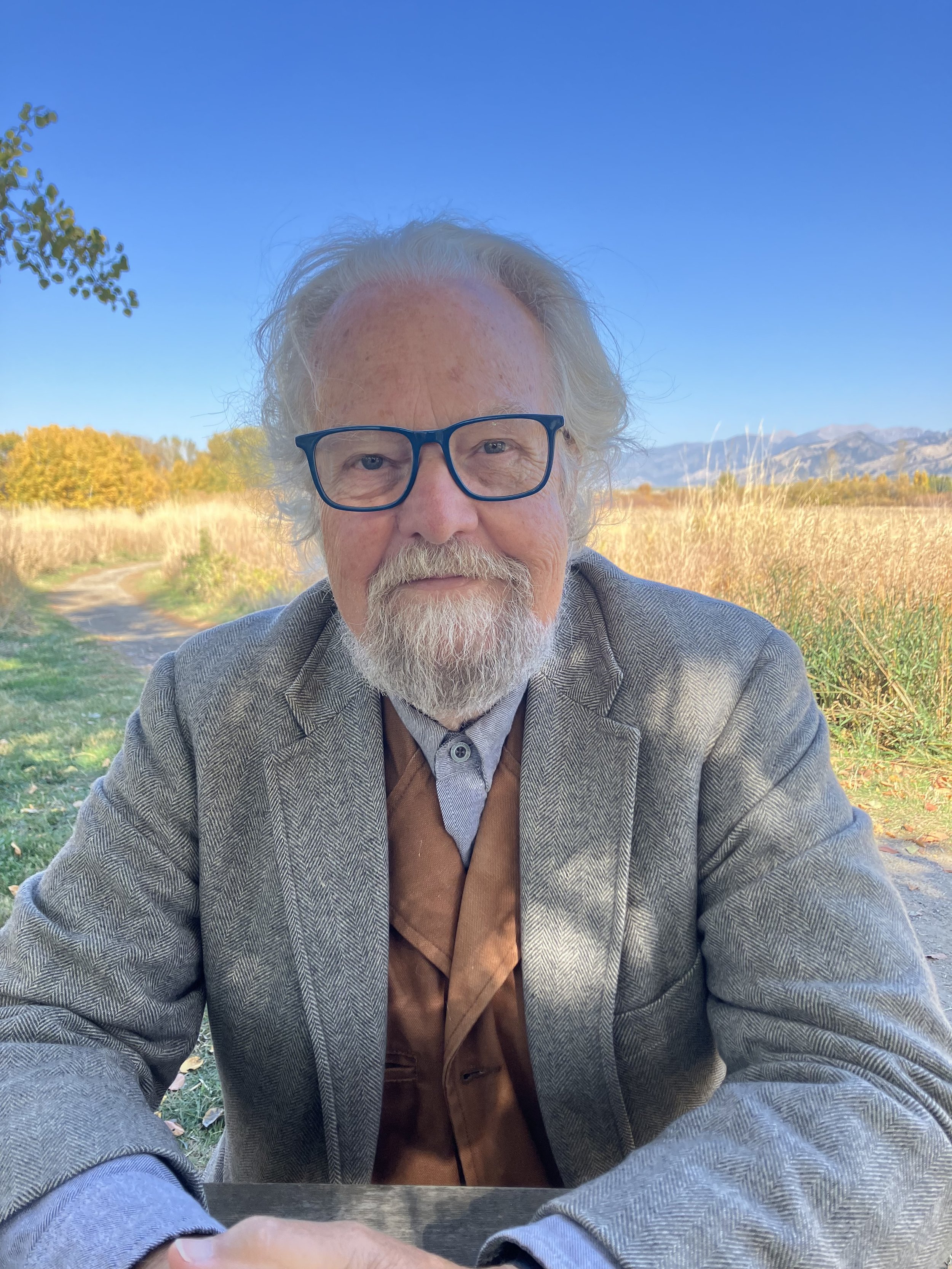
Resounding Trees Program
June 27-29, 2025
Introduction: As a species, we have been completely dependent upon trees—for safety, for food, for firewood, for life-giving oxygen—and yet sometimes we forget just how precious our forests are. “Resounding Trees” features six scenes that sound the depths of our relationship to the multitude of trees around us. From music to art, from drama to dance, these art forms intertwine with nature itself. These scenes do not tell a linear story but instead can be seen as various branches that stretch out in different directions. Each one stands alone and yet is part of our rich relationship to the arboreal world.
Read on for more background information about each of the performances and performers of this unique show:
Sacred Cheyenne Trees
Northern Cheyenne, traditional Women’s dance by Shandiin Kaline
“In the Cheyenne culture, trees are not just part of the land—they’re part of our spirit. They carry stories, they hold prayers, and they remind us how to live. Two trees that are especially sacred to us are the cottonwood and the cedar. The cottonwood is used in some of our most sacred ceremonies, like the Sun Dance. Inside every cottonwood branch is a natural star shape—a reminder of our connection to the sky, the ancestors, and the spirit world. The cedar is a prayer medicine. We burn it for protection. We carry it for healing. And I carry it with me in my dancing—as a way to cleanse the space and offer my movement as prayer.
The Women’s Traditional dance is the oldest style of dance for women. This dance is sacred. We don’t dance hard or fast—we take light steps, because we’re dancing for Mother Earth, and we honor her with every movement. Women’s Traditional is about grace, strength, and purpose. As women, we understand what it means to carry life, to offer care, to heal. In this dance, I move with intention—for the women before me, for those healing now, and for those still to come. Trees remind us to be still, to stand strong, and to reach upward while staying grounded. That’s how I dance—rooted like the cottonwood, praying like the cedar, and walking softly for the Earth.” -Shandiin Kaline
Family Tree
Performers: Jenna Ciralli & John Hosking. Music and lyrics written and performed by John Hosking.
Source: Richard Powers’s The Overstory, adapted by Gretchen Minton
This scene depicts the childhood of a dendrologist named Patricia Westerford, who eventually authors a groundbreaking study about how trees communicate with one another. Patty’s wonder at nature becomes the joy of scientific discovery under the tutelage of her father. In addition to teaching her about science, Patricia’s father introduces her Ovid’s work The Metamorphoses, including myths about people who turn into trees. When he gives her a copy of Ovid, Patricia’s father writes that she “understands how big and wide the family tree really is”. Why do we think of our ancestry as a tree? It is a useful metaphor, given the trunks and branches, but perhaps we should think of the family tree as extending beyond the human to include our relationship to all living beings.
www.jennaciralli.com
https://thirdpathpromotions.com/artists/john-hosking/
Song Of Willow
Performers: Charlotte Mae Ellison & Mikey Gray. Music written and performed by Mikey Gray.
Source: William Shakespeare’s Othello
In Othello, Desdemona bravely defies societal conventions by marrying a black man, but after a brief period of happiness Othello is manipulated into believing that Desdemona has cheated on him, which drives him into an insane jealously. In this scene Desdemona tells her friend Emilia of a song that she remembers, about a woman who was forsaken by her love (as Desdemona fears she will be). The emblem of a suffering lover is the willow tree, which we of course know as the “weeping willow” because of the way that it droops. Emilia urges Desdemona to be strong and even to consider rebelling, but Desdemona finds herself unable to escape, hanging her head and repeating the song of willow. Shakespeare’s other writings also mention oaks, sycamores, hawthorns, and many other species. The characteristics of each tree offer a way of understanding a range of human emotions.
https://resumes.actorsaccess.com/charlottemaeellison
www.mikeygray.org
Painting the Woodlands
Performers: Gabe Taurman & Aaron Schuerr
Source: Anton Chekhov’s plays Uncle Vanya, The Cherry Orchard, The Seagull; the letters of Isaak Levitan. Script adapted by Gabe Taurman and Aaron Schuerr
Based on the friendship between 19th-century Russian playwright Anton Chekhov and landscape painter Isaac Levitan, this scene considers what it means to depict trees through art and language. After having fallen out three years earlier, the friends reunite in a grove where Levitan paints and Chekhov agrees to read a passage from his work in progress—a play that expresses sorrow at the depletion of Russian forests in language that gives an uncanny foreshadowing of 21st-century calls for forest conservation. As they consider the challenges of artistic expression, these two friends draw close together again through their connection to the forest. Despite the sadness of the landscape they both describe, we are left with a simple hope in the act of creating artistic and arboreal life: “when I plant a little birch tree and then see it budding into young green and swaying in the wind, my heart swells with pride.”
Forest Woman
Māori traditional song and legend; by Gigi Pinwill
This Māori monologue includes a popular traditional Māori song, Pōkarekare Ana. The performance features ‘wiri,’ the traditional hand shaking dance movement symbolizing the sun haze on a hot day and is a tribute to the sun god. Pinwill explains the sacred role of trees in Māori culture and tells the story of Tāne Māhuta, the forest god, who created the world by separating the sky father and earth mother to let light and space into the world.
“I was honoured to develop an original performance piece from my Māori culture sharing our connection to trees as ancestors. We see the earth when treeless as dark because trees who hold up the sky and let the light in. My great-grandmother was banned by her own daughters from speaking Māori. So much can be lost in striving to survive.”
-Gigi Pinwill
Gigi Pinwill is in Montana for her Churchill Fellowship exploring global wildlife and natural art as innovative science communication tools to support her work with DunnART Productions.
Trees Opus 139
Performers: Angella Ahn & Carrie Krause (violin), Julia Slovarp (cello), Chi-Chi Lin Bestmann (viola), Erik Pearson (vocals)
Source: Music composed by Eric Funk; lyrics by Richard Powers.
“Trees, Op 139 was composed in 2017. It was a collaboration with my friend Richard Powers, author of the Pulitzer Prize-winning book The Overstory. He wrote three poems in connection with the novel, entitling them ‘Trees’, ‘In April’, and ‘The Self-same Tree’. My composition for these poems was originally scored for choir, piano, and ballet dancers, but for ‘Resounding Trees’ I transcribed the music for two string quartets with the poems spoken and sung along with the movements. This performance involves a live string quartet alongside a recording of the other string quartet, the same four musicians having done the recording. We’re viewing the live quartet alongside the pre-recorded quartet (a kind of reflection pool) with our actor verbally delivering the poems as an ensemble that reveals a poignant theater experience.” -Eric Funk
www.ericfunk.com
www.chichibestmann.com
www.carriekrause.com
https://montanachambermusic.org/welcome
www.montana.edu/music/directory/1524009/julia-slovarp













